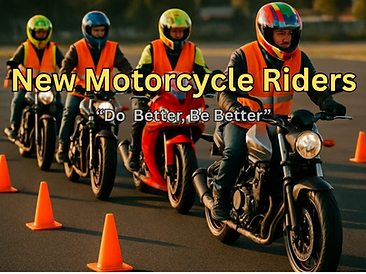Defensive Riding Tips: Are Motorists Trying to Kill Me?
- NMR

- Sep 24, 2025
- 3 min read

Contrary to popular sayings, motorist generally are not out to kill you personally. There are however situations, like road rage, that can lead to confrontations which can turn personal, even deadly. Always avoid confrontations, it's not in your best interest. Motorcyclists navigate roads filled with larger vehicles, where the thrill of riding is matched by significant risks. The question of whether car drivers intentionally harm motorcyclists is a pressing concern for many.
Understanding the Perception
Many motorcyclists feel overlooked or even targeted by drivers. This sentiment often arises from experiences like close calls or aggressive driving. A 2019 study found that 60% of motorcyclists experienced a near-miss due to a car turning left in front of them, showcasing a potential gap in driver awareness. Yet, is there genuine malicious intent behind these incidents?
Research shows that many motorcycle accidents involve other vehicles. However, more than 70% of these accidents are not due to malice but rather ignorance of a motorcyclist's presence. For drivers, the motorcycle's smaller size may lead to misjudgments in speed and distance.
The Statistics Speak
The statistics paint a stark picture of motorcycle safety. The National Highway Traffic Safety Administration (NHTSA) reported that motorcyclists accounted for 14% of all traffic fatalities in 2020, despite representing only 3% of registered vehicles. This means motorcyclists are about 29 times more likely to die in an accident than car occupants.
These figures, while alarming, do not confirm that drivers aim to harm motorcyclists. They spotlight the urgent need for greater road awareness and education.
The Role of Awareness
A significant contributor to motorcycle accidents is the lack of driver awareness. Many drivers do not see motorcyclists, particularly in blind spots. Statistics reveal that 48% of motorcycle accidents involve multi-vehicle collisions where the car driver failed to notice the motorcycle during a lane change or turn.
Both motorcyclists and drivers must prioritize awareness. Motorcyclists can improve visibility by wearing bright colors and reflective gear, which can decrease the risk of accidents by up to 37%. Drivers should commit to checking mirrors and blind spots thoroughly before changing lanes.
Aggressive Driving: A Different Story
While most accidents are not born from the intent to harm, aggressive driving creates a hostile environment for motorcyclists. Behaviors like road rage, tailgating, and erratic lane changes increase risks significantly. A study by the Motorcycle Safety Foundation found that 40% of riders reported feeling targeted by aggressive drivers, especially in congested urban settings.
Such aggression typically stems from impatience or a lack of respect for other drivers. Recognizing and countering this attitude is essential for all road users.
The Importance of Education
Education is vital for reducing accidents. Many states offer motorcycle safety courses that equip riders with essential skills to navigate safely. Ignoring driver education, however, poses risks. Programs that focus on sharing the road with motorcyclists can help.
Data shows that states with comprehensive driver education programs see up to a 20% decrease in motorcycle-related accidents. Investing in awareness creates a safer environment for everyone.
The Role of Technology
Technology is enhancing safety for motorcyclists. Features like blind-spot monitoring and collision detection are increasingly standard in cars. These innovations can prevent accidents by alerting drivers about motorcyclists nearby.
Motorcyclists should stay updated about these technologies. By understanding how to leverage these advancements, they can improve their safety on the road.
Personal Experiences
Many motorcyclists have firsthand accounts that reveal dangers on the road. Near misses and serious incidents illustrate the challenges riders encounter. Some feel that drivers aim to harm them, but the reality often points to negligence or a lack of awareness instead of deliberate intent.
Sharing these stories can shed light on the importance of understanding and empathy between motorists and motorcyclists.
Building a Community
Fostering a supportive motorcyclist community can address ongoing challenges. Connecting with each other through shared experiences, tips, and advice helps riders stay safe and vigilant on the road.
Engaging with local driver education programs and advocating for motorcycle awareness initiatives can also bridge gaps, creating harmony between drivers and motorcyclists.
The perception that car drivers intentionally target motorcyclists is widespread, but the reality is often more complex. The majority of accidents result from lack of awareness rather than malicious intent.
By nurturing a culture of respect, enhancing education for all road users, and utilizing technology, we can strive towards safer roads. Awareness, communication, and community building are essential steps in this ongoing effort.






.png)



Comments